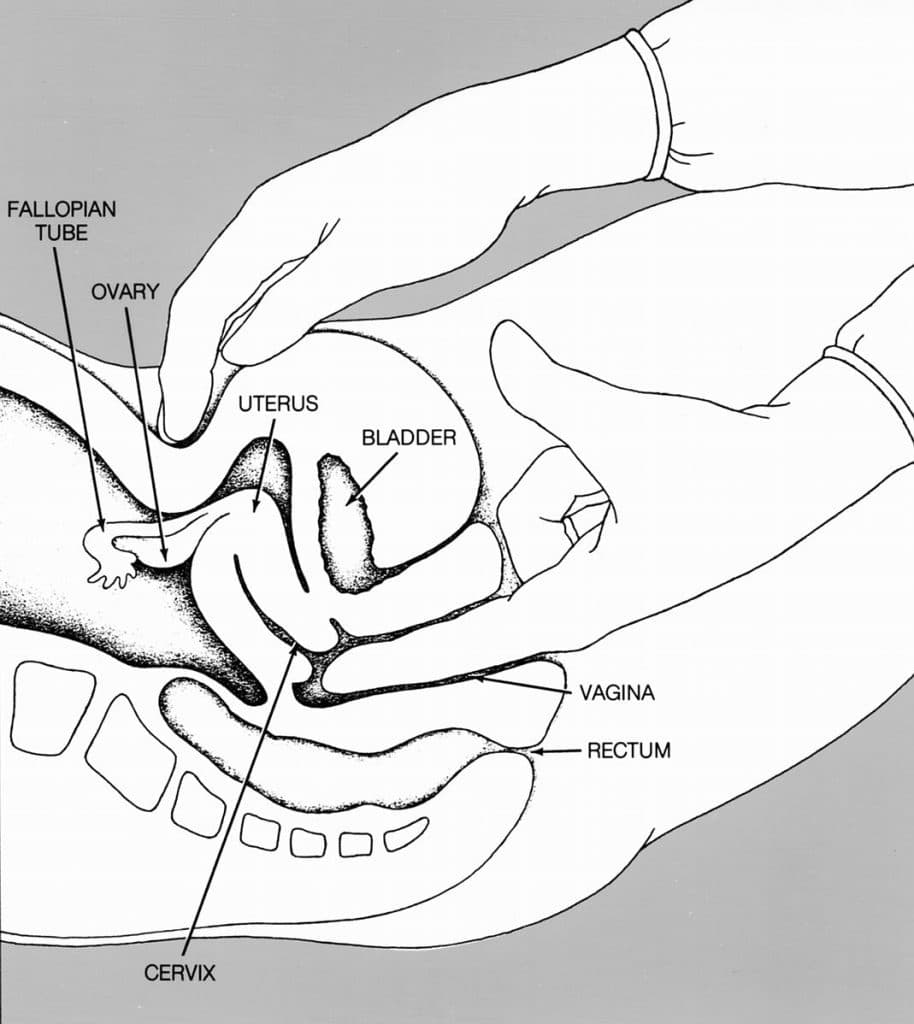The bimanual examination (also known as a pelvic examination) is an examination of the female genital organs.
In this article, we shall look at how to perform a bimanual examination in an OSCE-style setting.
Introduction
- Introduce yourself to the patient
- Wash your hands
- Explain to the patient what the examination involves and why it is necessary
- Reassure that it should not be painful but you will stop immediately if it becomes too uncomfortable
- Obtain verbal consent
- Request a chaperone
Preparation
- Patient should have an empty bladder
- Ask the patient to remove clothing from the waist down and any sanitary protection
- Cover with a sheet when appropriate
- When ready, ask the patient to lie on the couch on their back, with knees bent and apart.
- Note that any abdominal inspection and palpation should be performed before this step.
Abdominal Examination
- Inspect the abdomen for scars and ascites
- Palpate the abdomen for masses and tenderness
- Palpate the groin for inguinal lymphadenopathy
External Examination
- Put on gloves
- Inspect the external genitalia and perineum for:
- Deficiency associated with childbirth
- Abnormal secondary sexual characteristics – hair distribution, cliteromegaly (associated with hyperandrogenism)
- Skin abnormalities – lesions, warts, erythema
- Discharge – colour, consistency
- Bleeding
- Swellings of the vulva – tumours, cysts (sebaceous, Bartholin’s)
- Ask the patient to cough to observe any incontinence or prolapse
- Palpate the labia majora with the index finger and thumb
Bimanual Examination
- Use lubricating gel to lubricate the right index finger and middle finger
- Ensure the patient is still happy to proceed, and gently insert fingers into the vagina
- Enter with the palm facing sideways, then rotate so the palm is facing upwards
- In practice, you can use one finger for the whole examination. However, for OSCE/examination purposes, two fingers should be used (unless the presenting complaint is that partner cannot enter / pain during sex).
- Move along the posterior wall of the vagina and locate the cervix and feel for:
- Smoothness, clots, mobility and firmness
- Place fingers in the posterior fornix to lift the uterus whilst simultaneously pushing the fundus down by placing the left hand above the symphysis pubis.
- Assess uterus size (a normal uterus is approximately the size of a plum)
- Determine if anteverted or retroverted
- Note tenderness, mobility and shape
- Place the fingers in the lateral fornix and press lateral to the umbilicus to feel for any adnexal tenderness or masses (repeat on the other side)
- Gently move the cervix from side to side to check for cervical tenderness (important sign with ectopic pregnancy or pelvic inflammatory disease).
- Remove fingers gently and inspect for discharge or blood

Fig 2 – The bimanual examination. One hand lifts the uterus, whilst the other pushes the fundus down.
Completing the Examination
- Thank the patient and allow them to get dressed in private
- Remove your gloves and wash your hands
- Summarise findings and suggest further investigations (usually a pelvic ultrasound +/- bloods depending on the history and findings)

